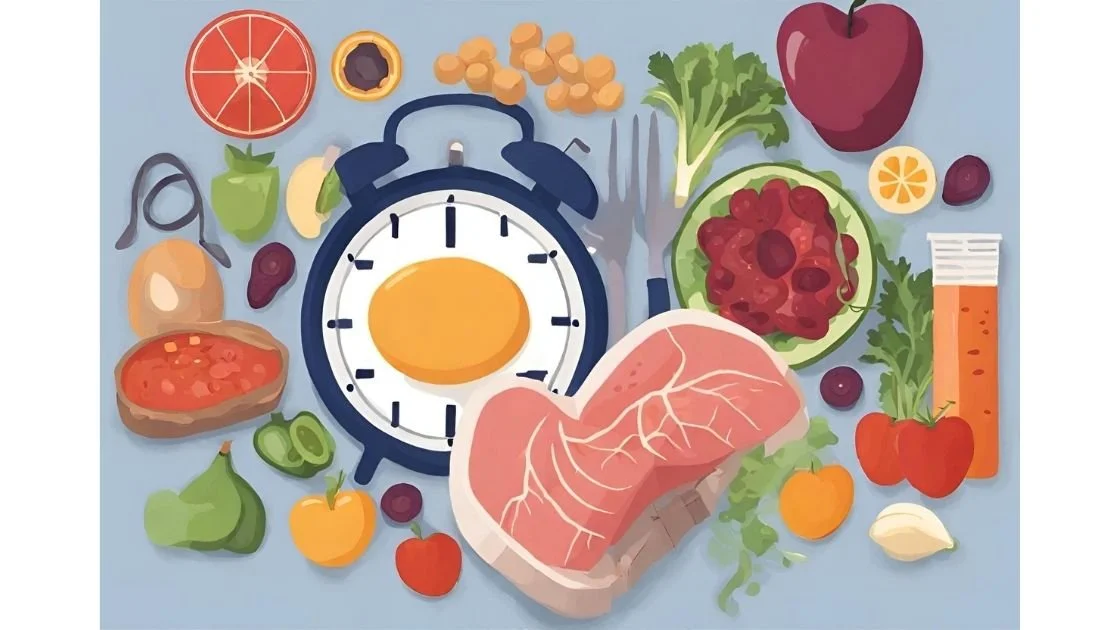Nutrition Tips for Lowering Blood Pressure: Eat Your Way to a Healthier Heart!
Just like the air in your car tires, blood pressure is the force exerted by blood pushing against the walls of your arteries. Healthy blood pressure is crucial for good circulation and overall health.
Unfortunately, high blood pressure, also known as hypertension, is a common condition affecting millions of adults. The good news? You can take control of your blood pressure through healthy lifestyle choices, including what you eat!
Hi there, my name is Dakota. I am a certified Exercise Physiologist specializing in Strength and Nutrition coaching. I am passionate about helping people achieve their health and fitness goals. Today, I will give you nutrition tips to lower your blood pressure!
The DASH Diet: Your Roadmap to Lower Blood Pressure
The DASH diet, which stands for Dietary Approaches to Stop Hypertension, is a scientifically proven way to lower blood pressure through dietary changes. This diet emphasizes nutrient-rich foods like fruits, vegetables, and whole grains. It also encourages low-fat dairy products, lean protein sources like fish and poultry, and healthy fats like nuts and avocados.
By limiting unhealthy fats, added sugars, and sodium, the DASH diet can significantly improve blood pressure and overall health.
What does the dash diet look like (recommendations):
The DASH diet recommends limiting sodium intake to 2,300 milligrams (mg) per day, with an ideal goal of 1,500 mg for individuals with high blood pressure. This is roughly equivalent to 1 teaspoon of table salt. It is important to know the hidden sodium in processed foods, canned goods, and restaurant meals. Therefore, reading food labels becomes crucial!
Aim for at least 30 grams (g) of fiber per day to promote healthy digestion, feel full, and even help lower cholesterol levels. Whole grains (brown rice, quinoa, oats), fruits (berries, apples, pears), vegetables (beans, lentils, Brussels sprouts), and nuts and seeds are excellent sources of fiber and should be included in your diet.
The DASH diet recommends limiting saturated and trans fats, which can raise bad cholesterol (LDL) and contribute to heart disease. To achieve this, you should cut back on processed foods, fried foods, fatty cuts of meat, and full-fat dairy products. Instead, focus on healthy fats in unsaturated sources such as avocados, nuts (almonds, walnuts), olive oil, and fatty fish (salmon, tuna).
Added sugars contribute to empty calories and can negatively impact your health. To avoid this, the DASH diet recommends limiting added sugars to a minimum. Be aware of sugary drinks (sodas, juices), processed snacks (cookies, pastries), and sugary condiments (ketchup, BBQ sauce).
The DASH diet isn't a restrictive fad, but rather a sustainable eating pattern that promotes overall health and well-being. By incorporating these key components and exploring the wide variety of delicious and nutritious options within the DASH framework, you can take control of your blood pressure and feel your best!
Sodium (1500 - 2300 mg per day; 1500 is ideal)
Fiber (at least 30 grams per day)
Unhealthy fats (limit saturated and trans fats)
Added sugar (empty calories and minimizing is best practice)
Powerhouse Foods for Blood Pressure Control
Certain foods are more effective than others when it comes to reducing blood pressure levels.
Potassium is a mineral that helps regulate blood pressure, and fruits and vegetables like bananas, oranges, leafy greens, and potatoes are excellent sources of it. Low-fat dairy products such as yogurt and milk provide calcium and additional potassium (the keyword is 'low-fat'!). Whole grains like oatmeal, brown rice, and quinoa are rich in fiber, which can benefit and improve cardiovascular health.
Mindful Eating Habits for Success
Knowledge about proper dietary habits is crucial for managing blood pressure.
One way to monitor your sodium intake is to read food labels carefully and use a food tracker. Cooking with fresh ingredients at home is another effective way to control your eating.
Moreover, practicing mindful eating techniques, such as taking time to savor your food and eating slowly, can help you maintain healthy eating habits and control your portions.
Conclusion
By making informed dietary choices, you can take control of your blood pressure and improve your overall health.
The DASH diet offers a proven approach, and incorporating potassium-rich foods, low-fat dairy, whole grains, and healthy fats can make a significant difference. Remember, even small changes can add up.
So, adopt these heart-healthy tips and empower yourself to lead a healthier life!

